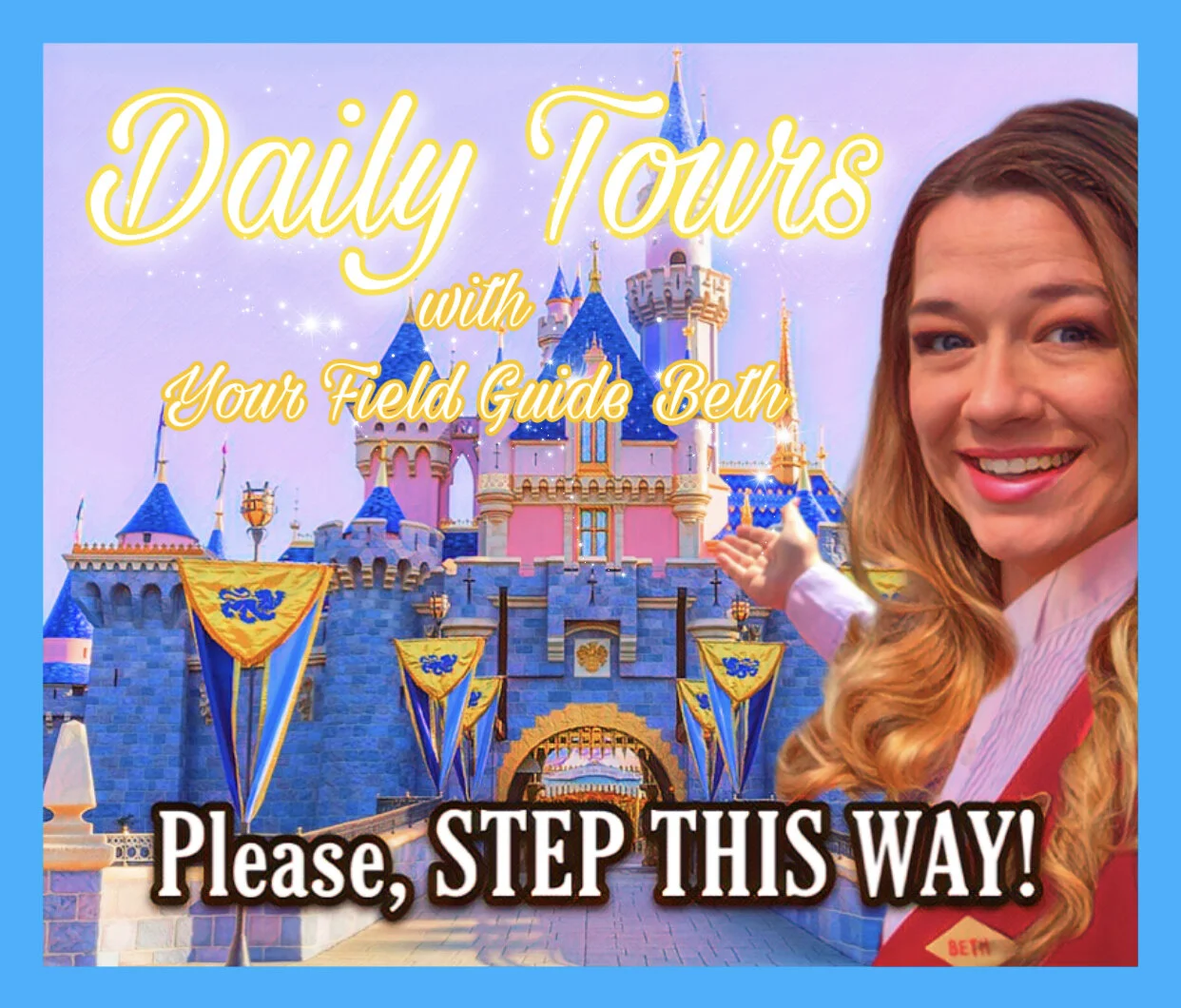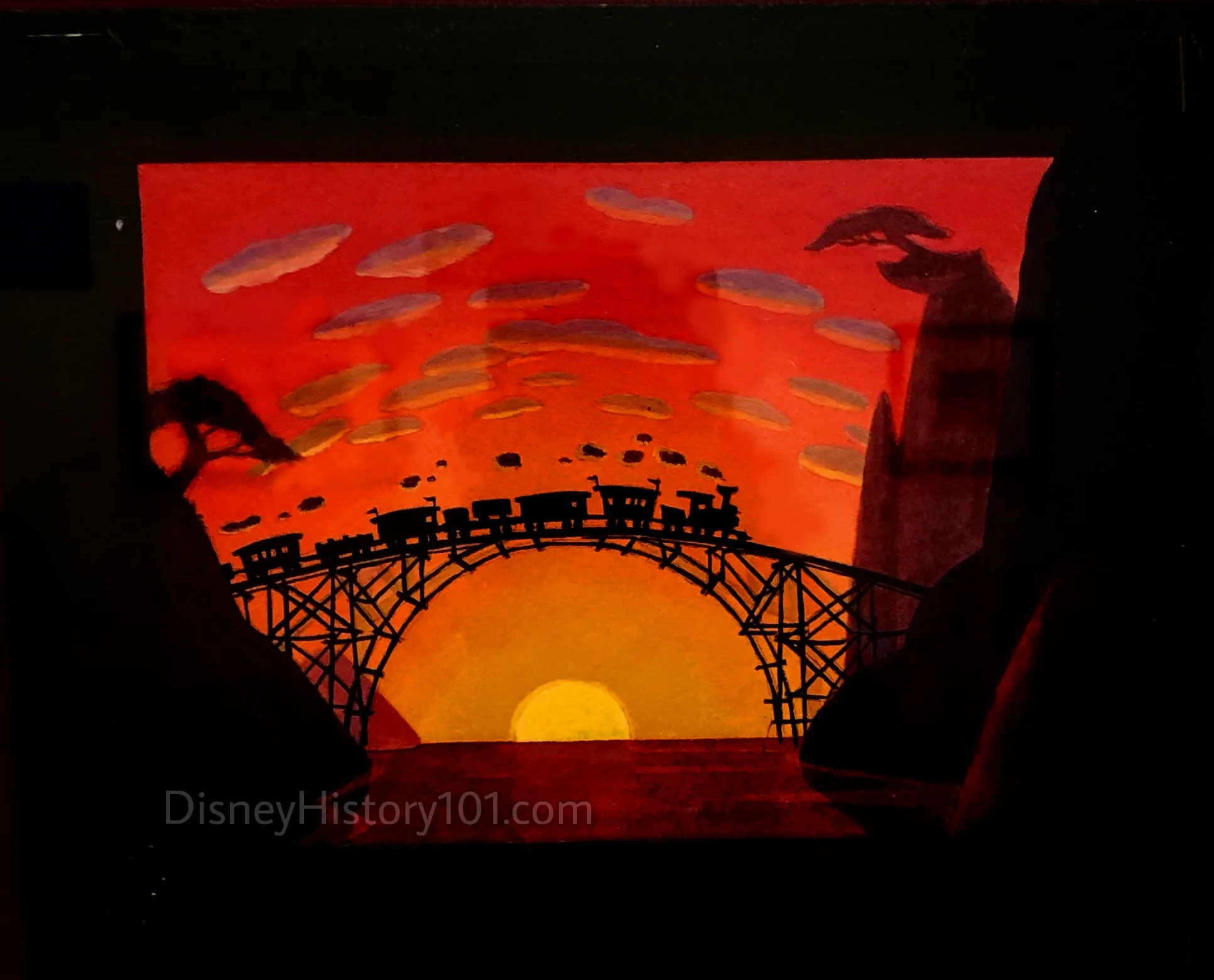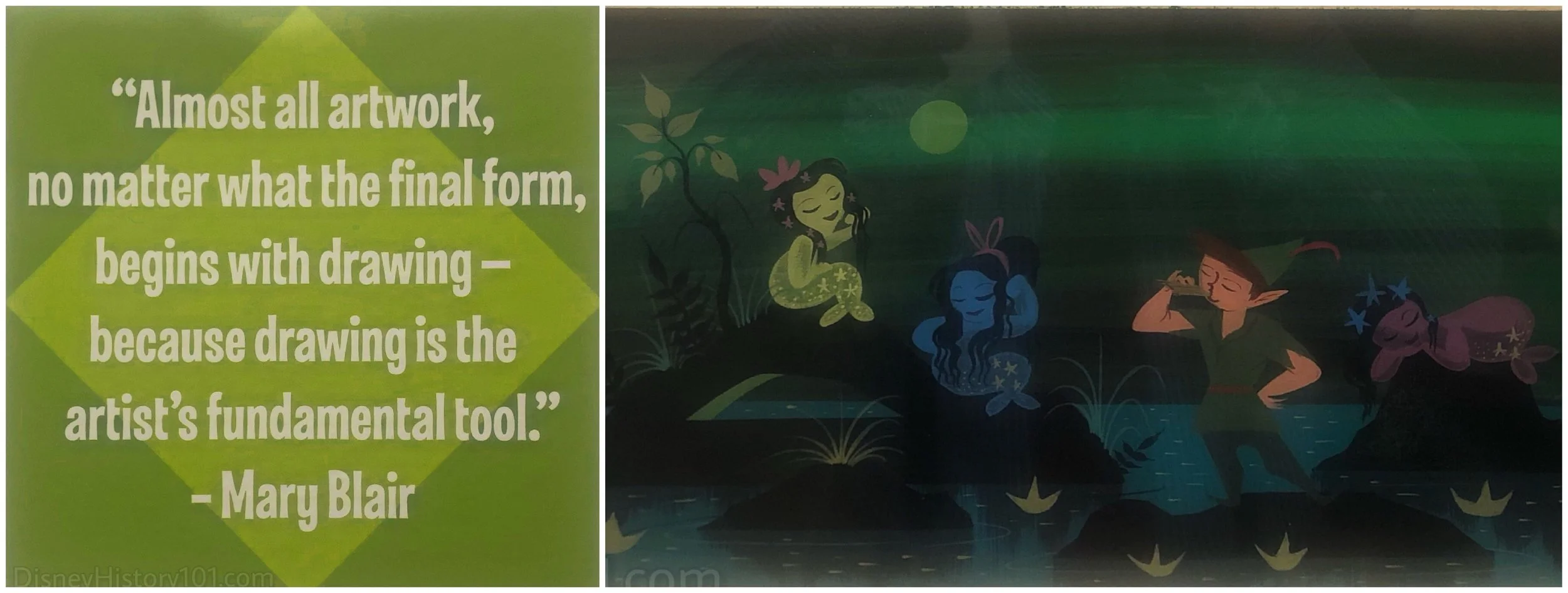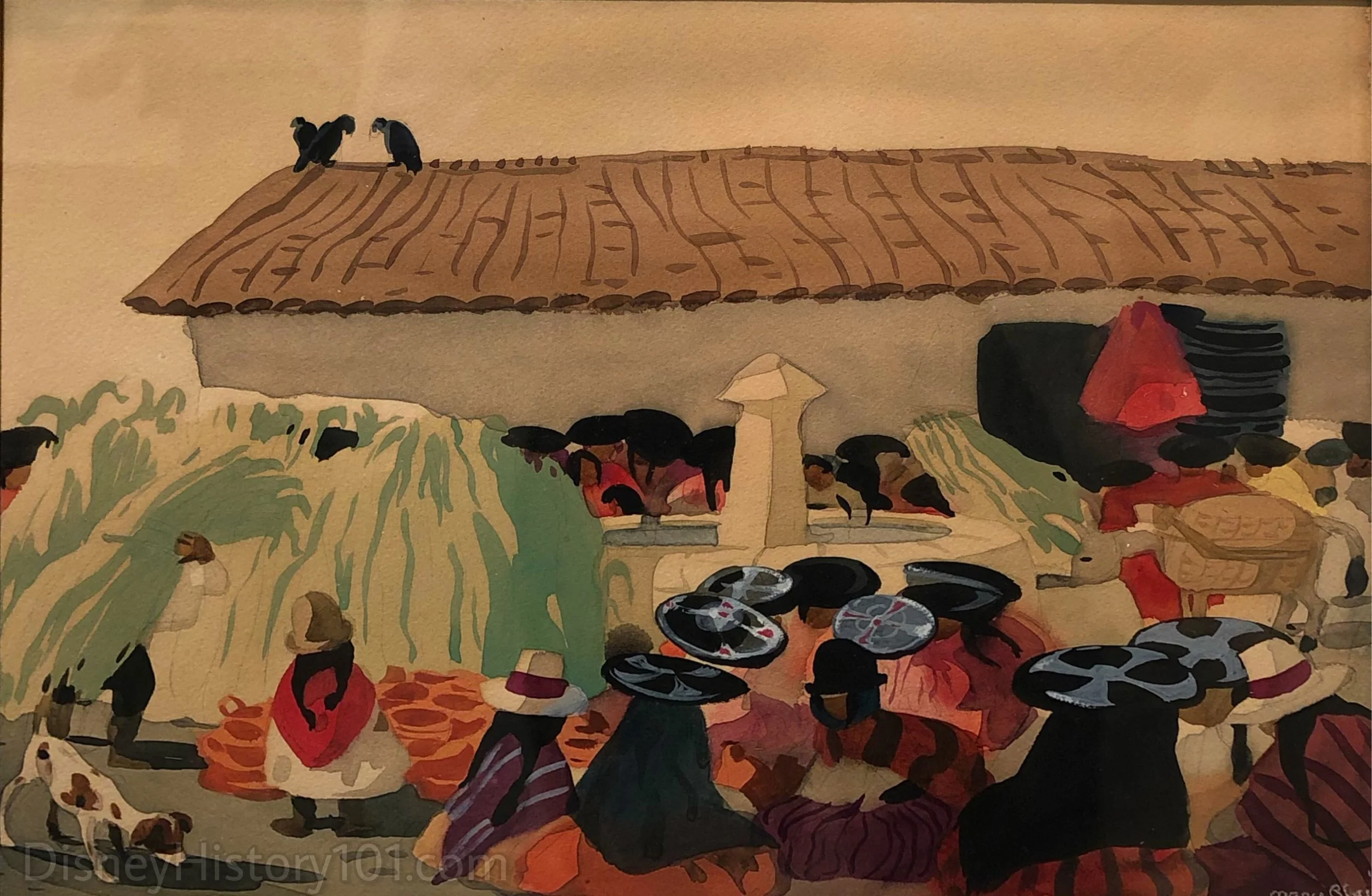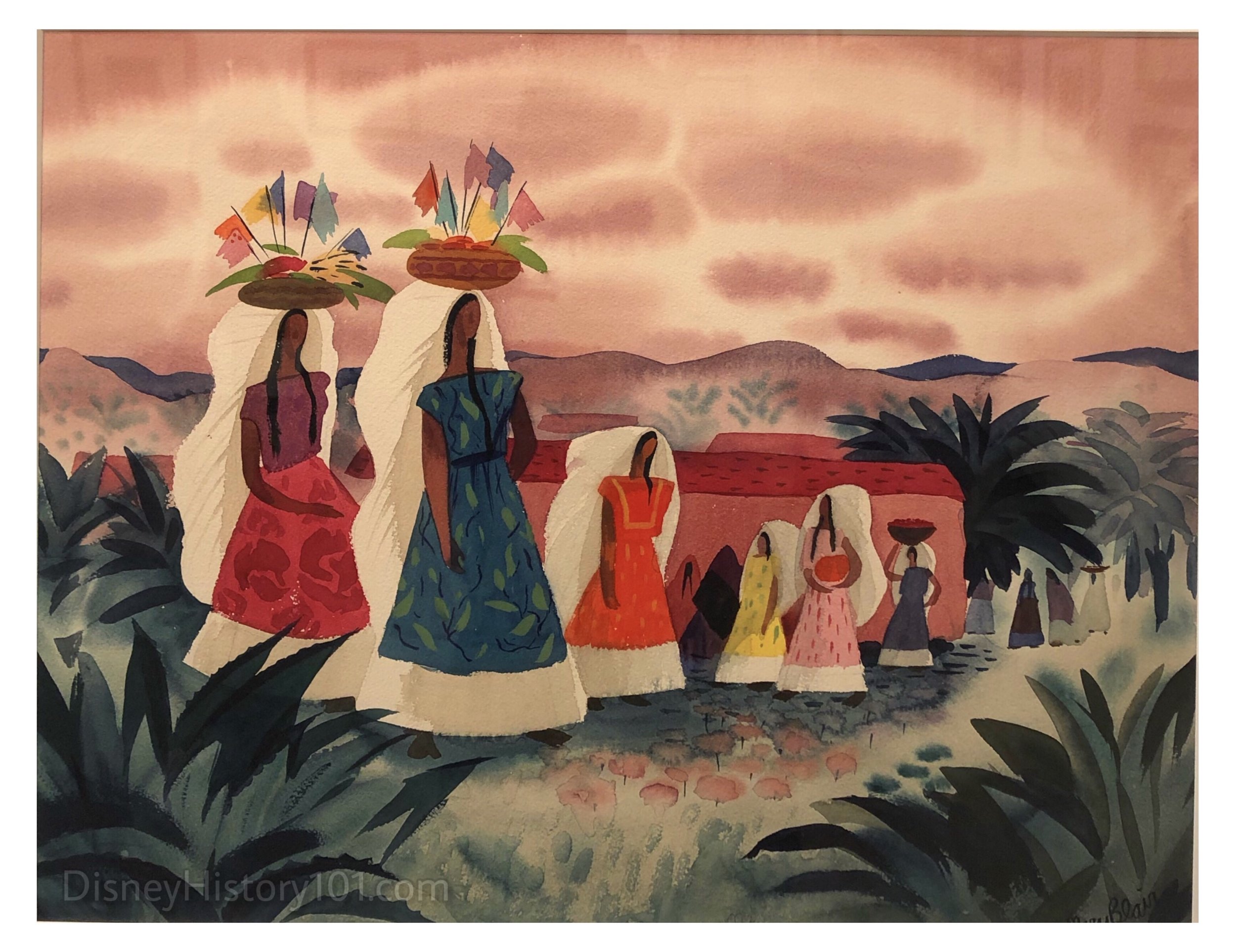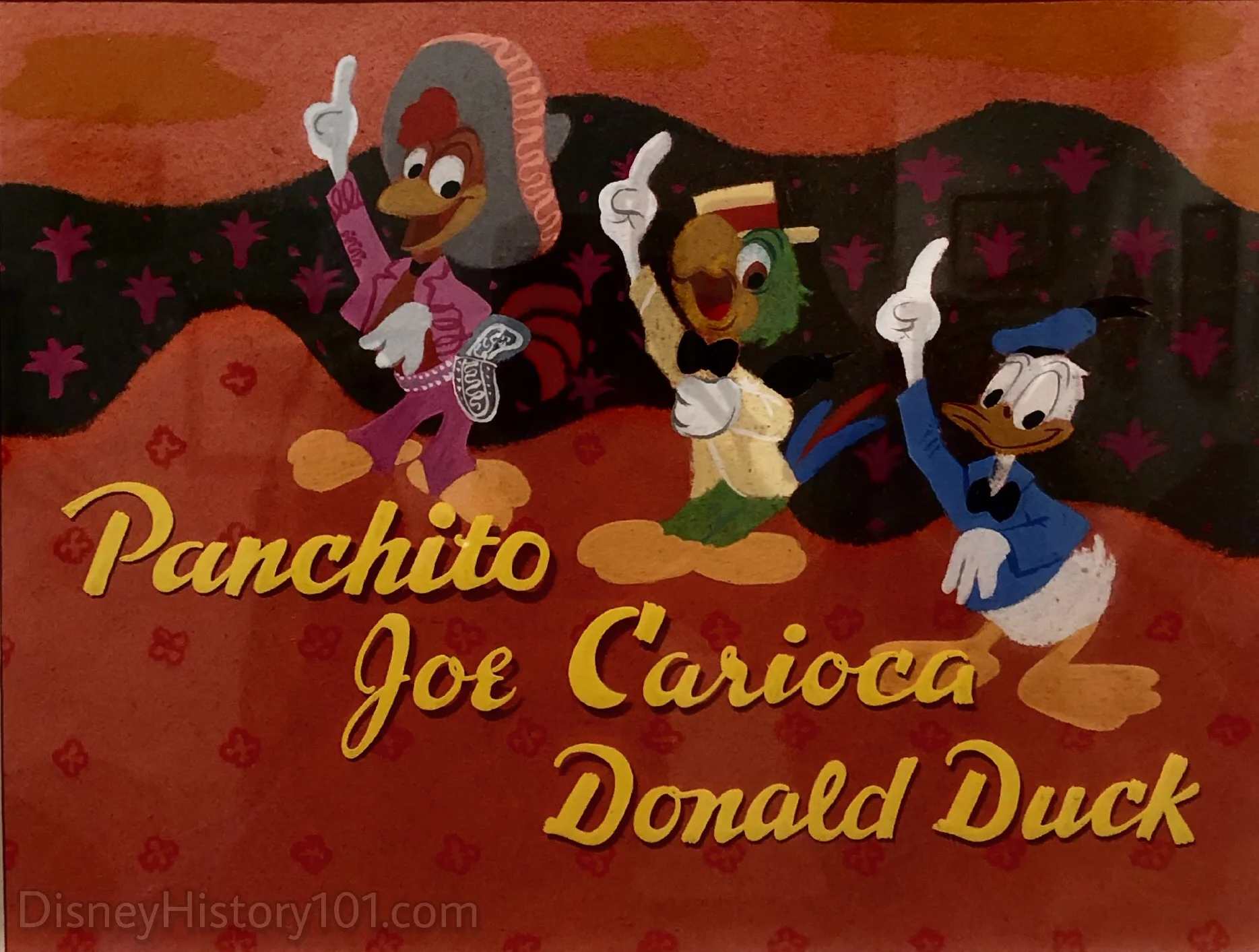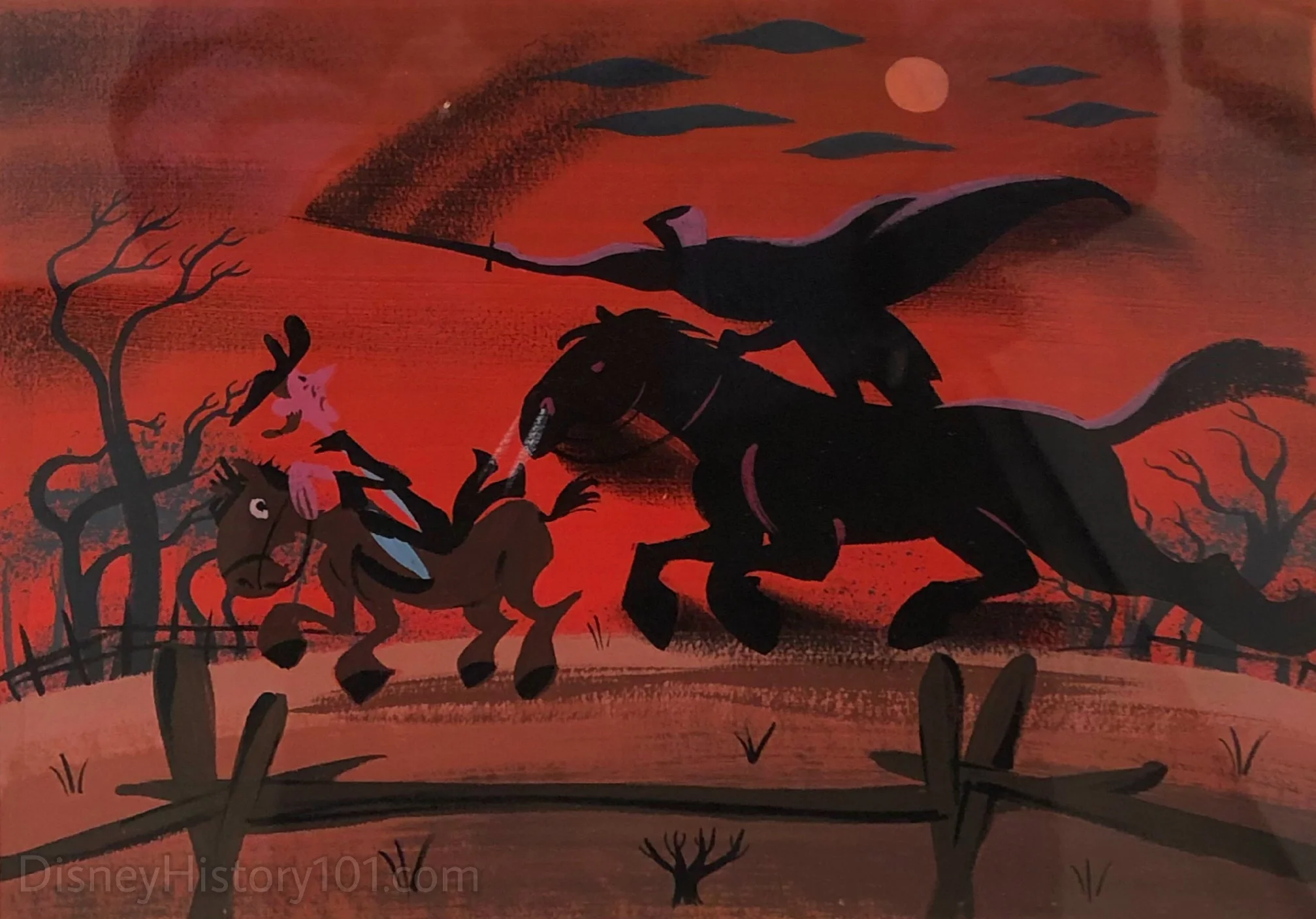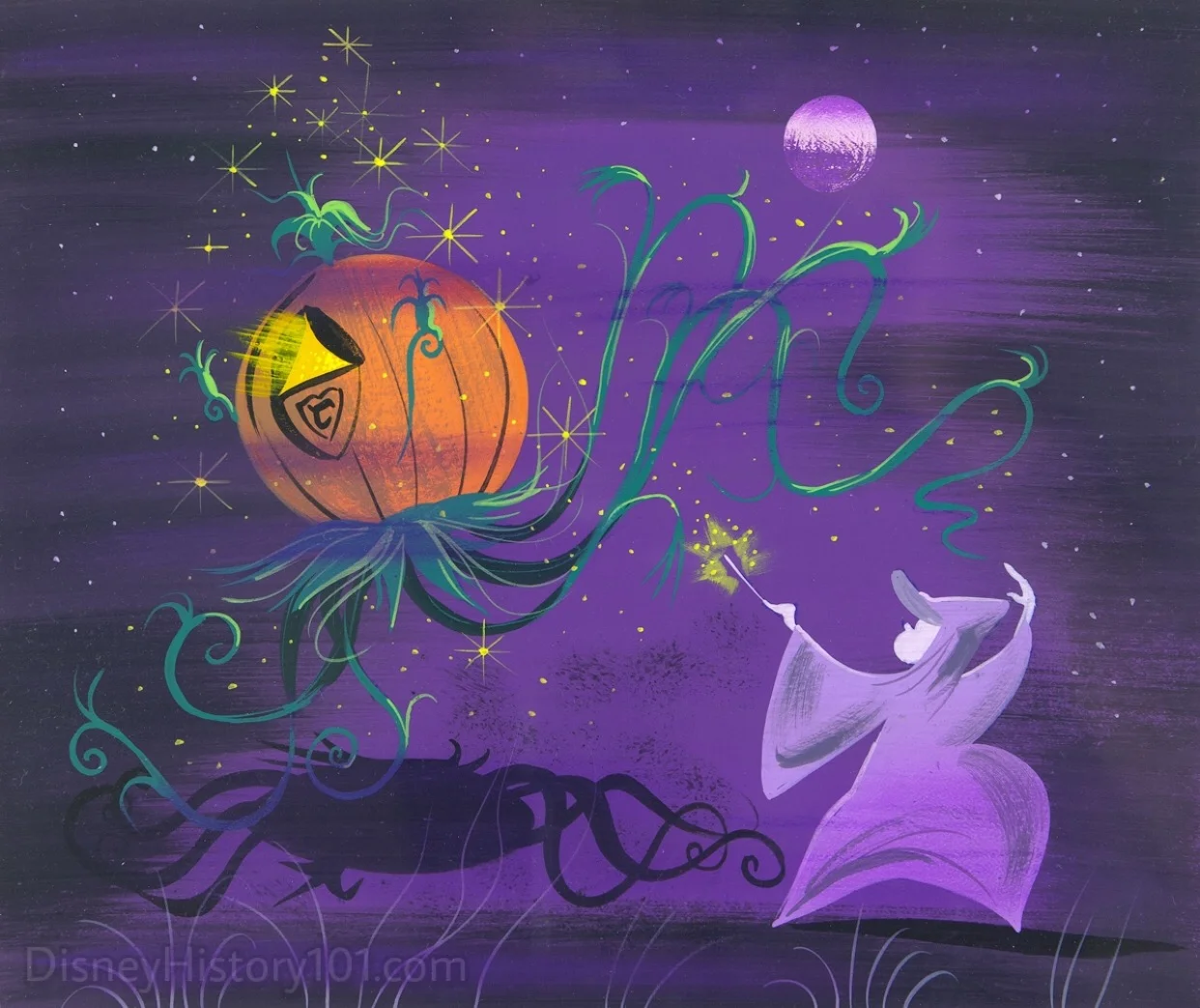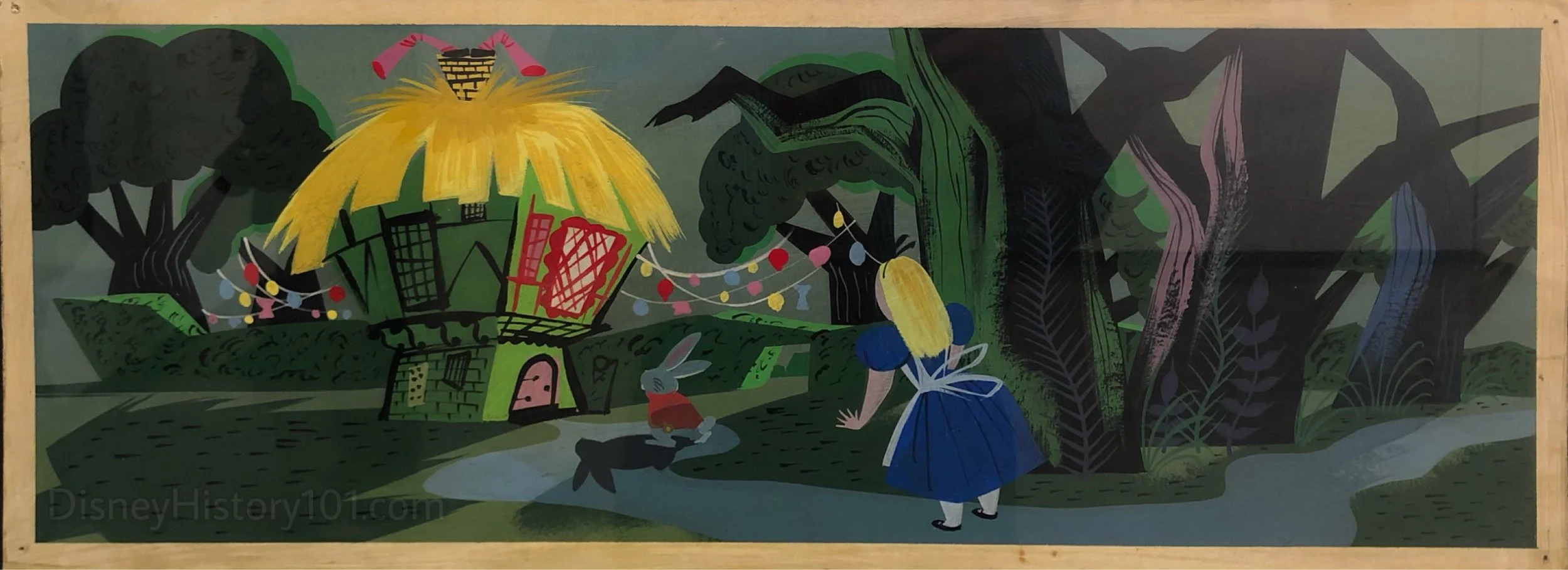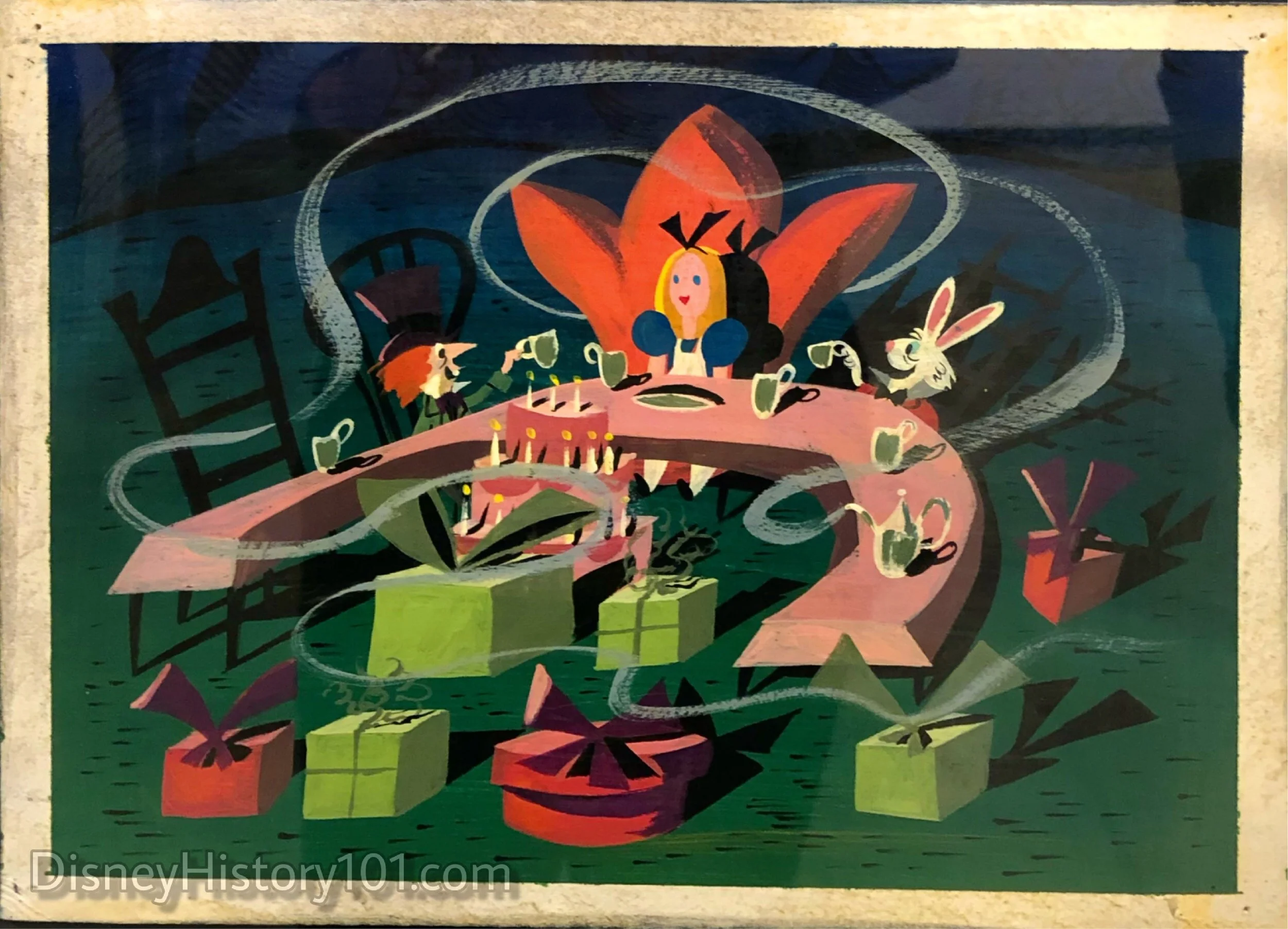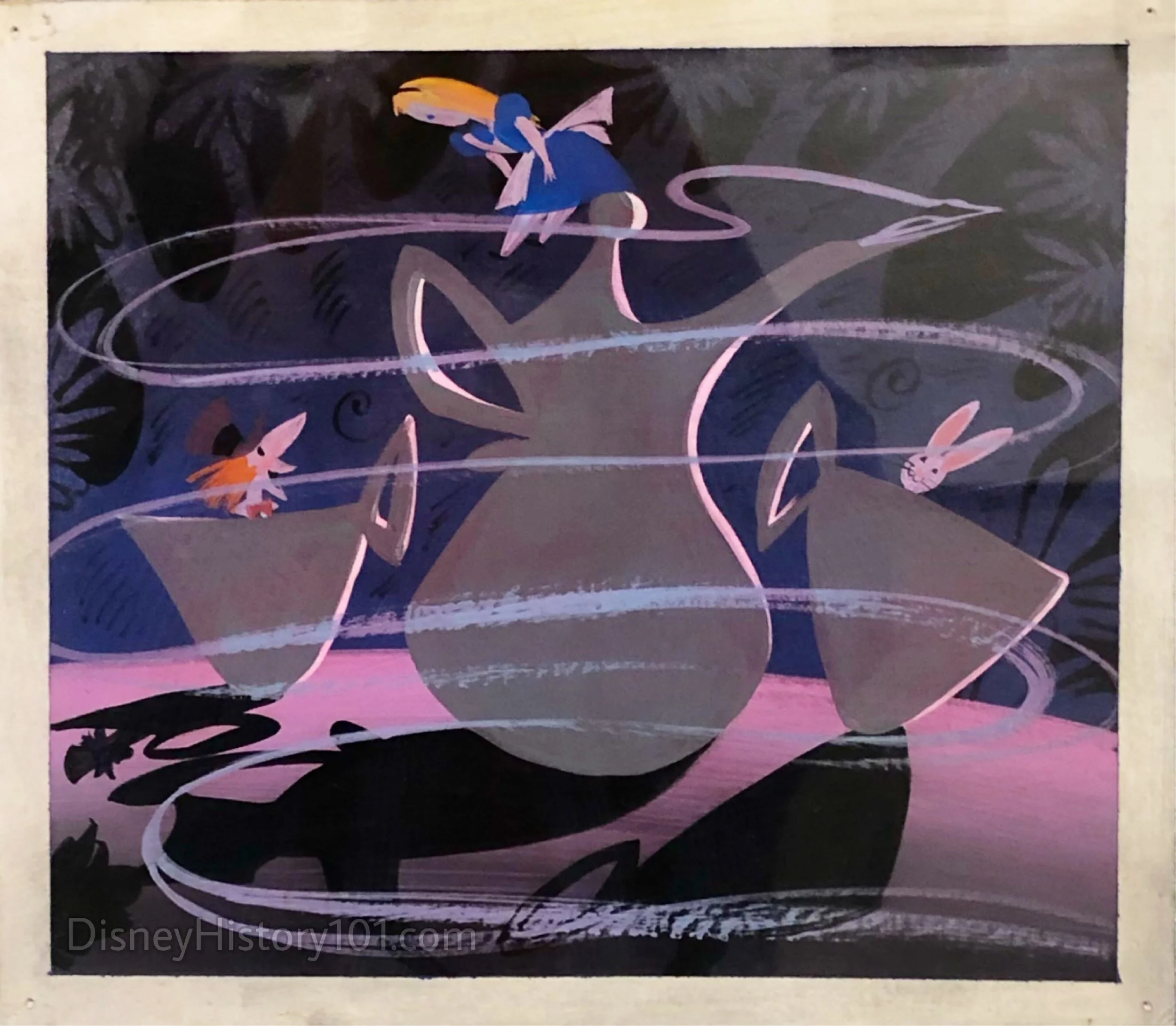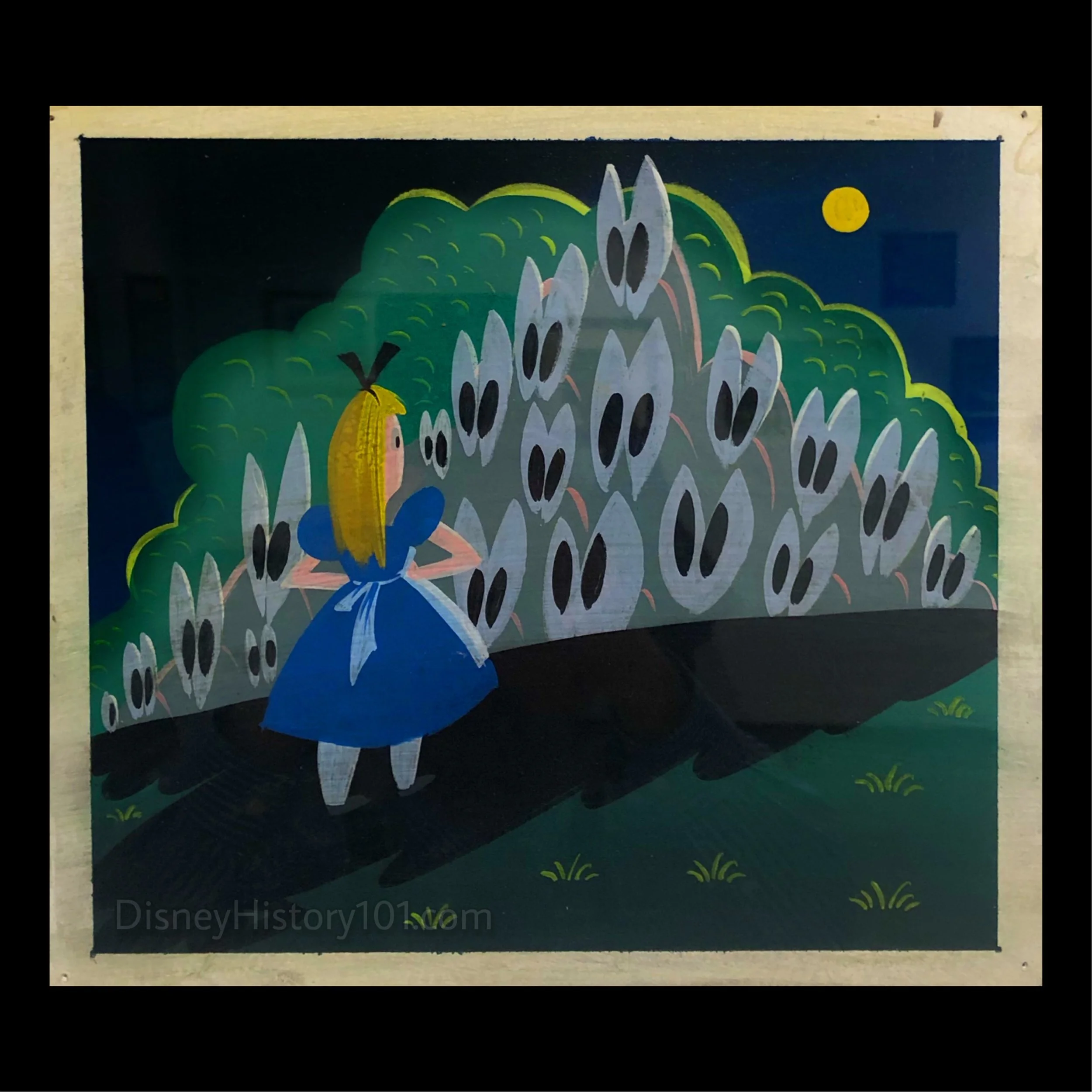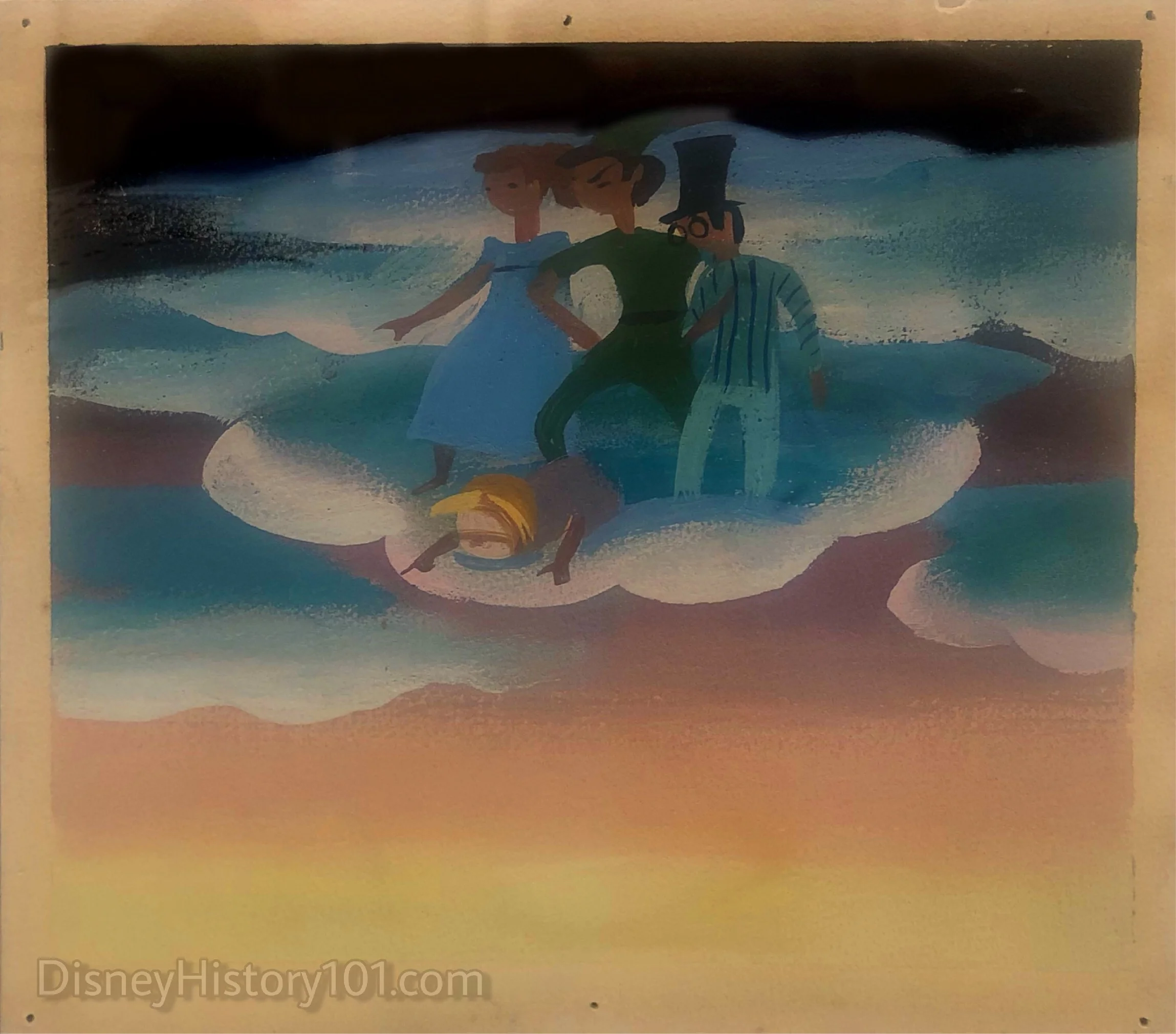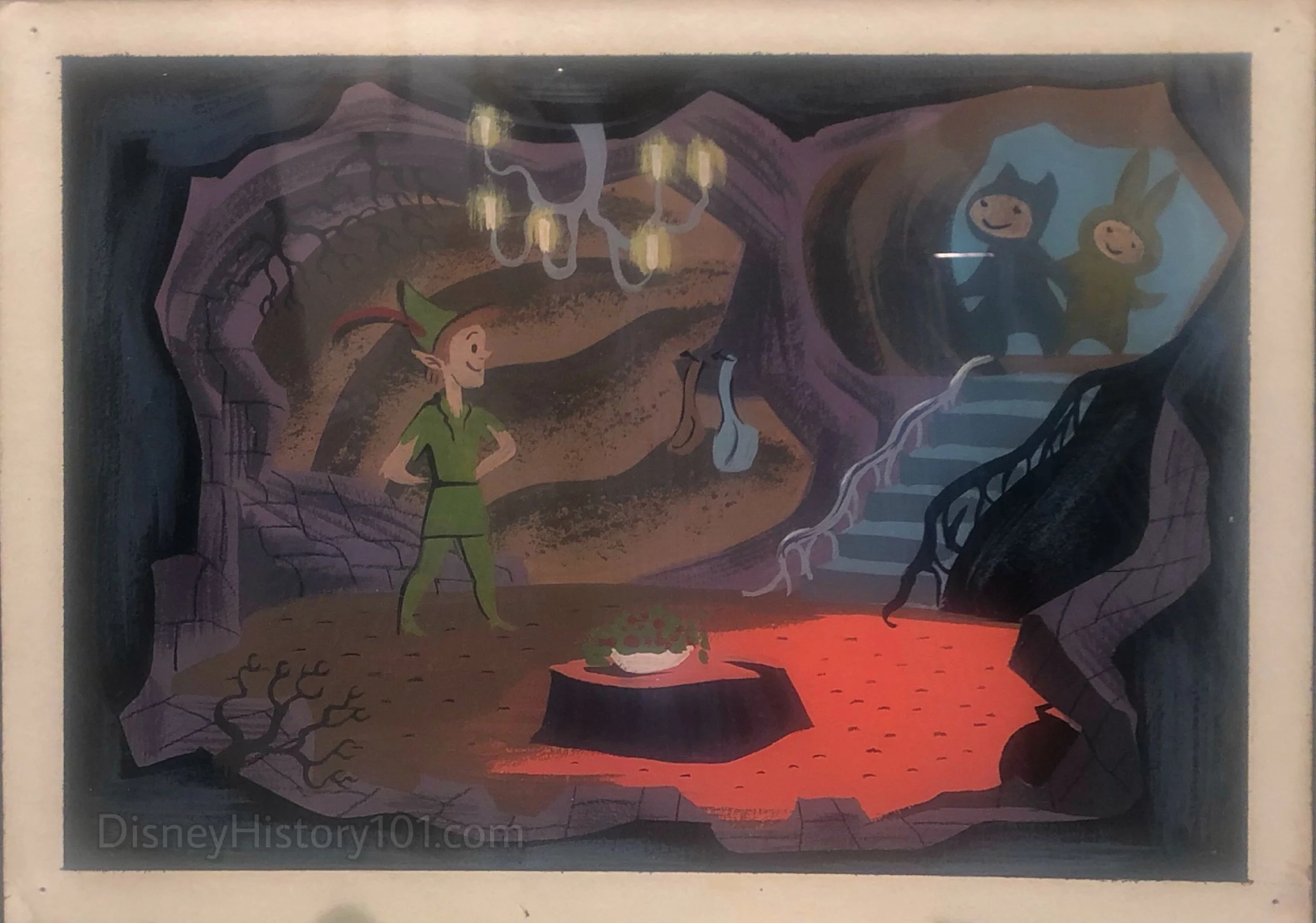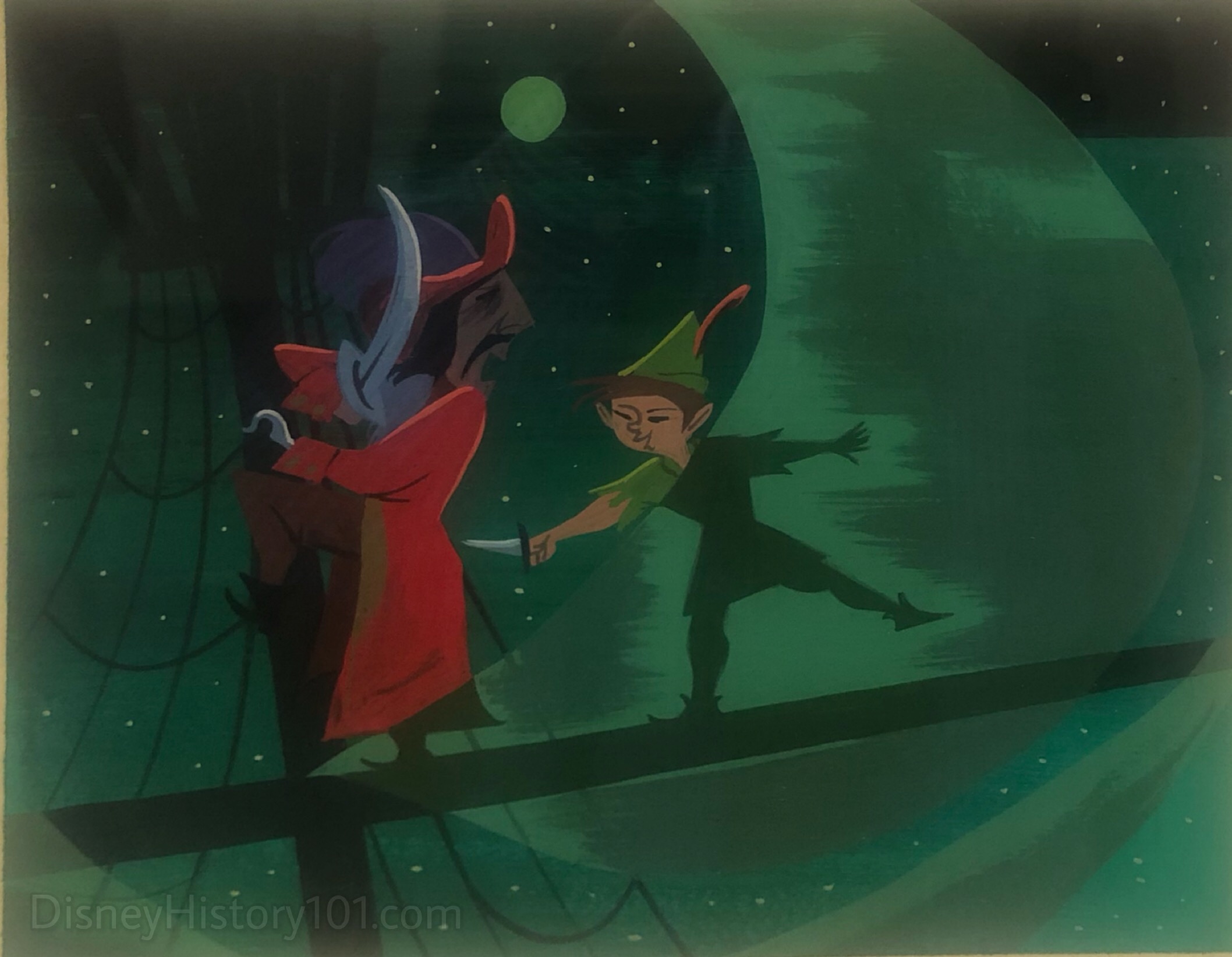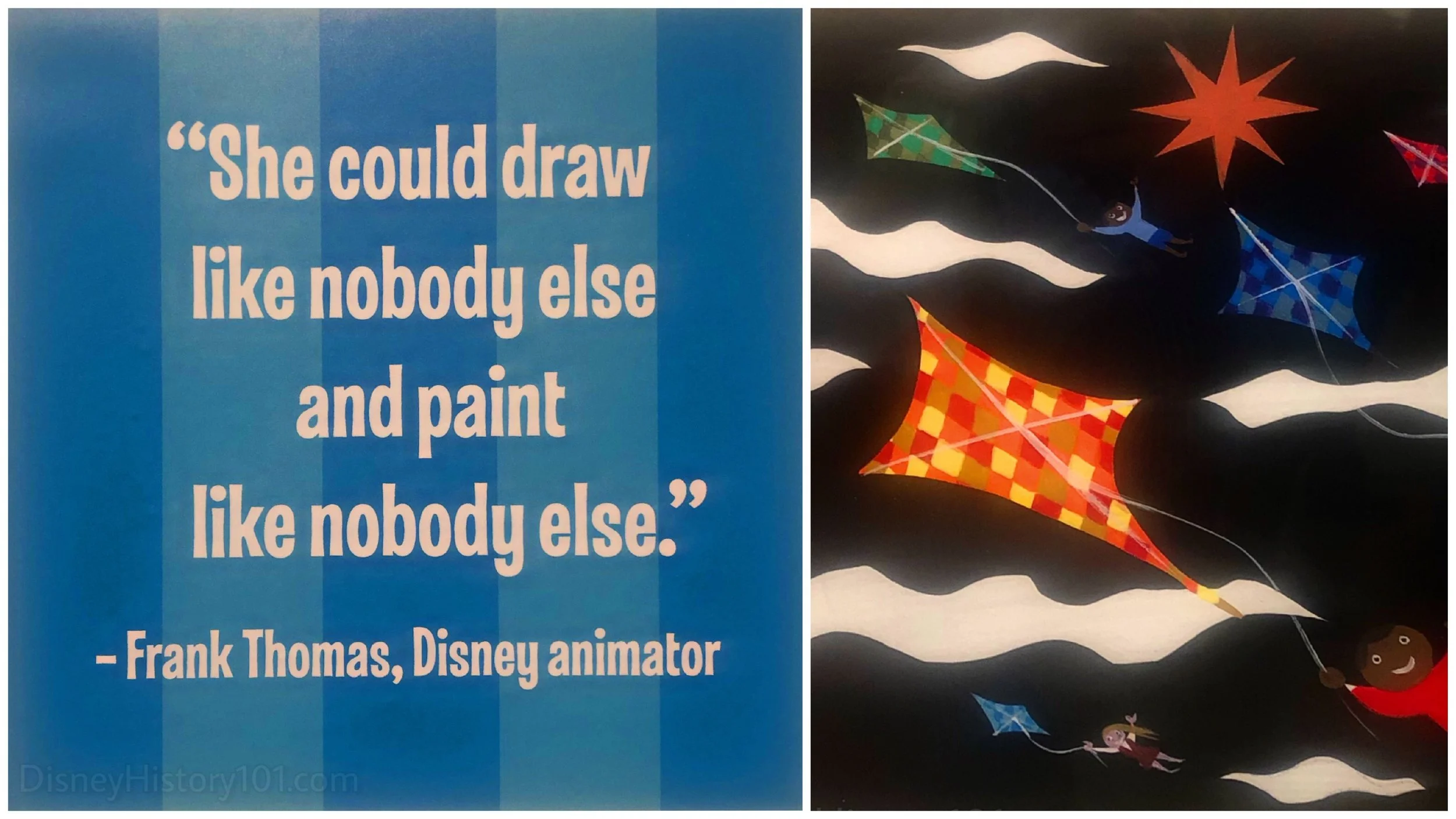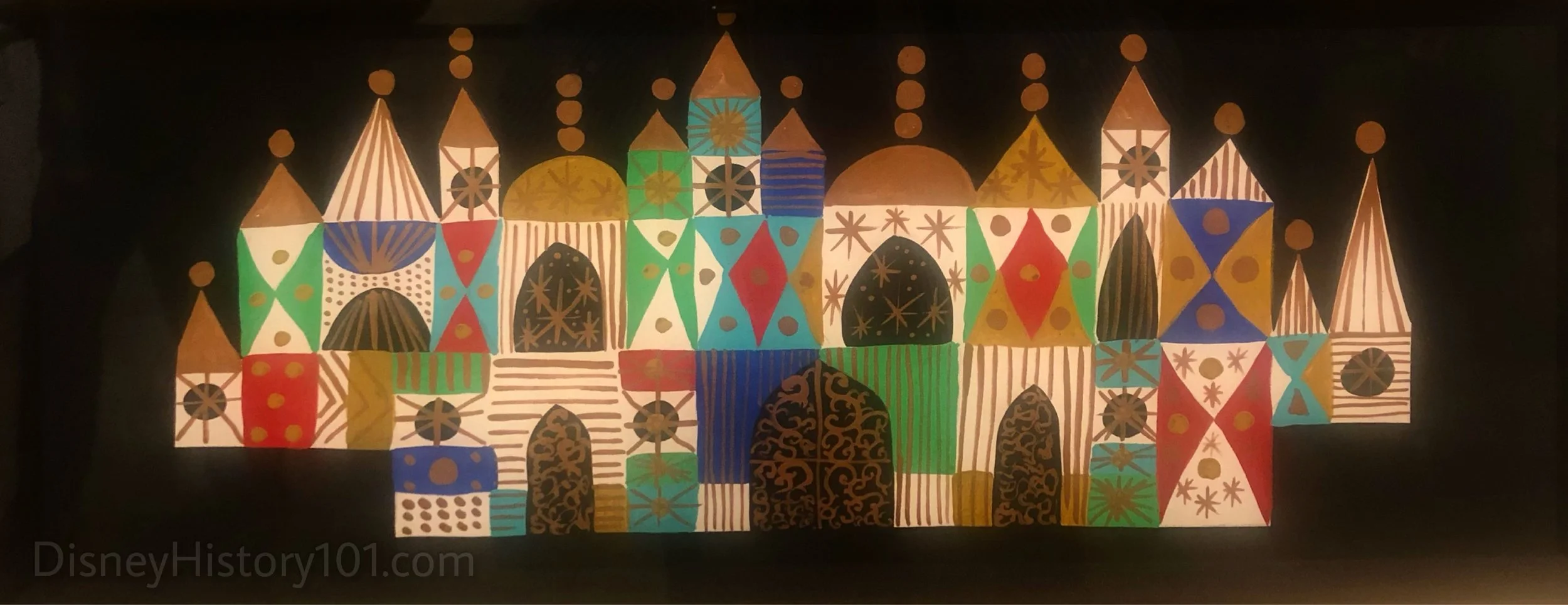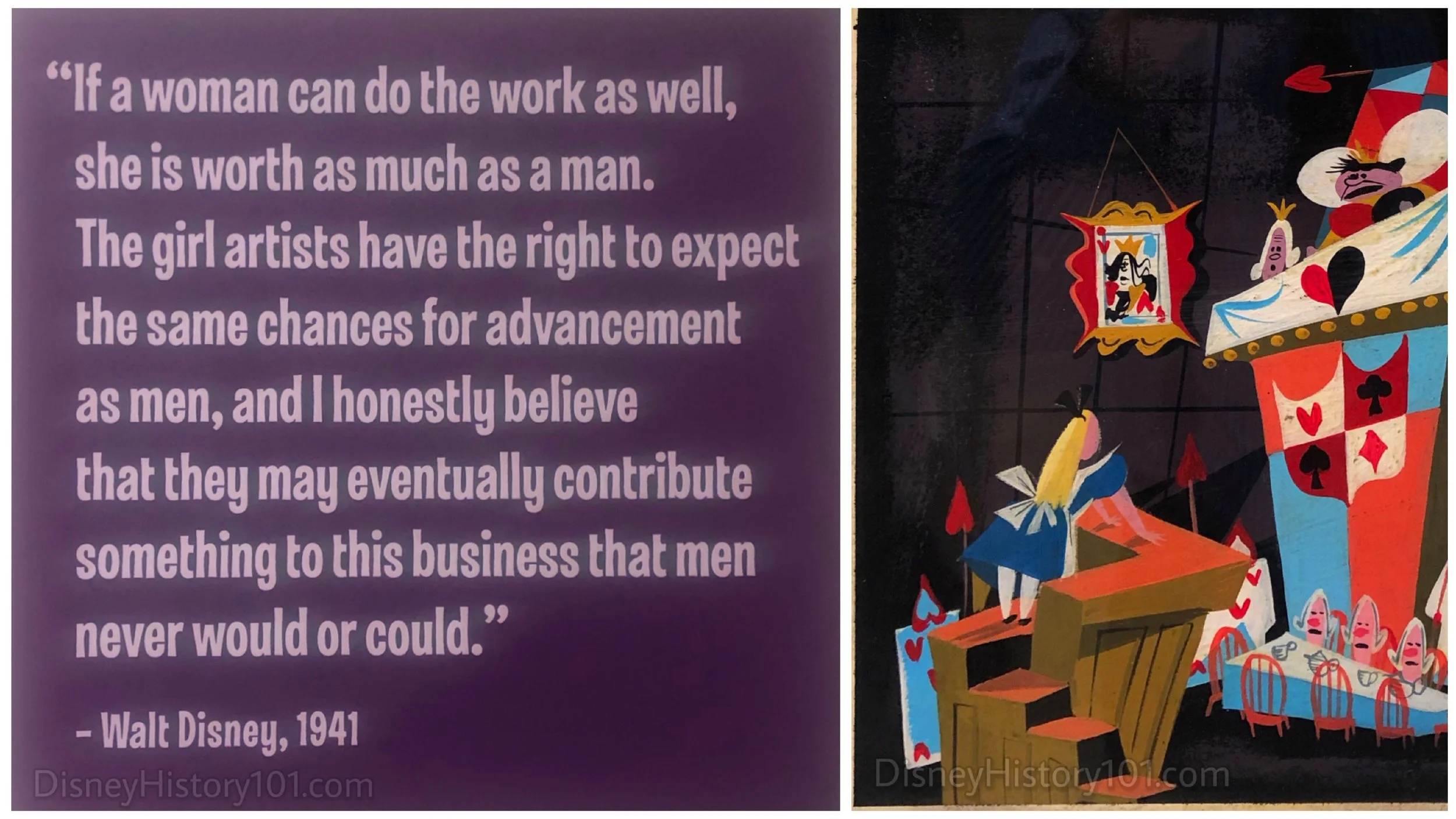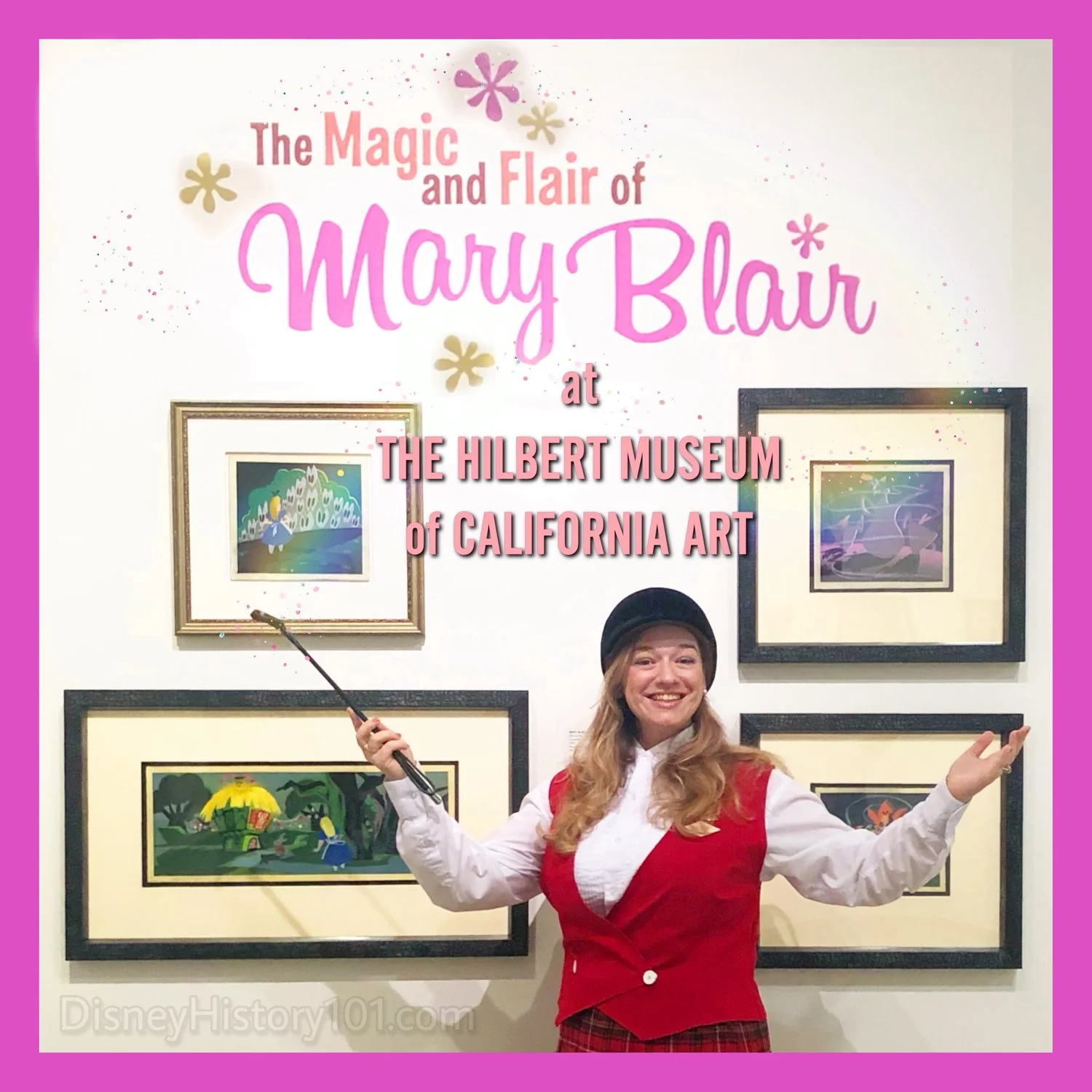If you were asked to name a legendary Walt era artist who revolutionized a field of art, whose name comes to mind? Perhaps you recall Ward Kimball or Xavier Atencio and their comedic gag-filled character doodles. Maybe you think of the life-like “heart-filled” in-betweens of best friends Frank Thomas and Ollie Johnston. These aforementioned artists all brought something truly unique to the Walt Disney Studios-produced feature films and attractions that we all enjoy. However, one artist (though able to adapt where needed), was most noted for her trademark usage of color and her whimsical child-like expressions.
Many Walt Disney aficionados may agree that Mary Blair was outstanding in her field, perhaps one of the most genius and influential contemporary California artists to emerge from the 20th century. Her color theories and palette helped revolutionize the field of illustration as well as animation at Walt Disney Studios. As Mary’s style matured and changed, so did her exploration of new mediums. From water color & gouache to ceramic tiling) Mary’s technique of artistic expression broadened to become as diverse as the subjects that she chose for her artwork.
HONORS : Mary Browne Robinson attended San Jose State University before being awarded a scholarship with Chouinard. From there, she went to work for Metro Goldwyn Mayer’s animation department and ultimately joined Lee Blair at UB Iwerks Animation.
We will now examine a collection of more than twenty works of art, which span most of Mary’s career with Walt Disney Studios. You will have the opportunity to view pieces completed during the production of such memorable feature films as “Dumbo”, “Cinderella”, “Alice in Wonderland”, “Peter Pan”, as well as a few oft-overlooked Walt Disney Studios features too. Fans of Mary Blair may even notice a couple of pieces they have never seen among this exhibit, like two paintings completed during her journey with Walt & “el groupo” through South America during 1941. Also, you’ll want to pay special attention to a couple of rare conceptual renderings produced for the timeless attraction Its a small world. Please step this way as we experience “The Magic & Flair of Mary Blair” at The Hilbert Museum of California Art.
“Light and Color out of Darkness”
The depression era was a difficult time for those who experienced it. People could not be picky about where they worked, and most took employment where they could in order to put food on the table. However, some struggling artists were fortunate enough to find work within the booming animation industry out west in Los Angeles, California.
Lee Blair was one such artist, and he found employment at Walt Disney Studios while American citizens were climbing out of the depression during 1938. A whole two years later, Lee managed to get his wife hired and Mary began her career with Walt Disney Studios during 1940.
One of Mary’s first assignments with Walt Disney Studios was to study and research for the production phase of the 1941 release Dumbo. Illustrators and animators were sent on research field trips to Circuses as they were setting up the tents. Circus tents and animals were also brought into Walt Disney Studios for reference and artists (like Mary) captured what they observed in various mediums. The following study by Mary Blair is highly detailed - far different from the simple backgrounds of the final film.
MARY BLAIR (1911 - 1978)
The Circus
c.1940
Watercolor on paper
The Hilbert Collection
We live in a world of natural color all around us - captivating shades and hues. Mary seemed to have a good grasp on how to utilize those variations of the palette to trigger or further an emotional response. This is where her work stood out as she developed conceptual story scenes for Dumbo. She performed countless gouache color studies for the spectrum of emotional scenes that would play out throughout the plot of the touching story. These paintings and drawings would help the animators and background artists translate the appropriate colors, establishing what the audience would see and feel while watching the final film.
MARY BLAIR (1911 - 1978)
Circus Train on Bridge
Concept Art for Walt Disney’s Dumbo
1941
Gouache on board
The Hilbert Collection
WHAT IS “GOUACHE”?
“You will see that many animation concept drawings - and many commercial illustrations - are created in a medium called “gouache” (pronounced “gwash”). Gouache is a type of paint consisting of natural pigments, a binding agent such as gum arabic, and water. It is similar to but more opaque than watercolors, and can be thinned with water without the translucent effect of the watercolors. Gouache has a history going back at least six centuries ; it was used by many famous artists, and its name is derived from guazzo the Italian word for “mud” - referring to its matte effect. Many commercial artists, illustrators, and concept artists use gouache because it is versatile, can be reworked easily by wetting, dries quickly, and its matte finish lends itself to posters and illustrations. Traditional (hand-drawn) animators use it for its opaque effect in painting cels, while the animation backgrounds are often painted in watercolors.”
-MARY PLATT, Curator, Hilbert Museum of California Art at Chapman University.
“Color Has Its Harmony”
While the war raged in Europe during 1941, Walt and a handful of artists stepped into South America and toured several countries - listening to the exotic music and folk stories, observing the various cultural settings, and meeting the diverse indigenous peoples of each land they traveled to. The U.S. Government sponsored this journey for a select group of Walt Disney Studios artists which was known as the “Goodwill Tour”. The goal was to fight fascist sentiment through friendship with our Southern neighbors. Mary Blair was one of the few selected to take part in this incredible ambassadorship.
South American Village
1941
Watercolor on paper
The Hilbert Collection
All of the artists doodled, sketched, and painted their way through several South American countries. It was during this time that Mary’s stylish “flair” began to distinguish her work from others at the studio. “You’ll see the evolution of Mary’s artwork…how she’s influenced by the look of South America, the bright colors and the spontaneity. And then you see that reflected in the concept paintings that she did when she came back and started working for Walt as a Lead Artist”, relates Mark Hilbert. When she returned from South America, Mary brought new colors home with her. Rather than subtle variations of primary color schemes, she began to use colors that were in stark contrast, and yet worked with each other! John Canemaker commented on the effect of the “Goodwill Tour” upon Mary’s style : “It was an unexpected creative detonation that greatly influenced future Disney films and theme park attractions.”
South American Women
1941
Watercolor on paper
The Hilbert Collection
Mary Blair and the other artists finally returned home, where all their artwork and experiences culminated in a beautifully rendered film entitled The Three Caballeros. This feature length film was one of several “package films” released by Walt Disney Studios, meaning that the film was actually comprised of several smaller musical vignettes which were later released individually. The film is also noted for utilizing a blend of live action and animation. We aren’t surprised that colorist Mary Blair aided the bright visuals seen on screen starting from the title sequence!
Panchito, Jose Carioca and Donald Duck
Walt Disney’s The Three Caballeros
1944
Opening title cel setup with painted background
The Hilbert Collection
During 1948, Mary also contributed color studies for another of Walt Disney’s package films - Melody Time. The following concept provided color study for the Once Upon a Wintertime segment. Many decades later story scenes like this one would inspire artists like Michael Giaimo while working on Frozen!
The following year Mary Blair helped breathe life into the characters from Kenneth Grahame’s The Legend of Sleepy Hollow. The next piece features the terrifying, dramatic sequence involving the “sad-sack schoolmaster Ichabod Crane …pursued by the terrifying apparition of the Headless Horseman.” This scene was part of another package film - Walt Disney’s 1949 release The Adventures of Ichabod and Mr. Toad.
MARY BLAIR (1911-1978)
The Headless Horseman and Ichabod Crane
Concept art for Walt Disney’s The Adventures of Ichabod and Mr. Toad
1949
Gouache on board
The Hilbert Collection
Greens, reds, blues, and purples - each film that Mary contributed toward seemed to be dominated by certain parts of the color spectrum. You can feel the “magic” on the night air expressed through deep velvety purples in our next piece. Mary produced a number of gouache color studies for Walt Disney’s Cinderella during 1950.
Fairy Godmother and Cinderella’s Pumpkin Coach
Walt Disney’s Cinderella
1950
Concept Art
Gouache on board
The Hilbert Collection
The next painting also takes place at night, but note a different emotional tone due to the dominant contrasting blue and pink hues.
The Clock Strikes Midnight
Walt Disney’s Cinderella
1950
Concept Art
Gouache on board
The Hilbert Collection
Mary’s color theming and whimsical style were most valuable to Walt Disney Studios. But in our following subjects (produced for the 1951 release Alice in Wonderland), pay attention to Mary’s sense of framing and staging. Some of her staging found a way into the storyboards, and ultimately final cuts of the film.
On our next painting Hilbert Museum Director Mary Platt comments : “High in the clouds, Peter Pan, Wendy, John, and Michael gaze down on the scene below. As golden light filters up from below, the sky” blends and fades “from yellow to pink to dark blue. Second Star to the right, and straight on till morning! Blair’s concept art, the finished film, and the accompanying song captured the absolute ecstasy of flying - a childhood dream that, for the Darling children, came true.”
MARY BLAIR (1911-1978)
You Can Fly
Walt Disney’s Peter Pan
1951
Concept art
Gouache on board
The Hilbert Collection
During the time of Peter Pan’s production, Mary had recently become the mother of two boys - Donovan born in 1947, and Kevin born in 1950. This attribute perhaps appropriately equipped her to work on this film. Mary envisioned the underground “grotto as a comforting, earthy space…womb-like, you might say. Its really the perfect place for young men afraid of growing up to hide out in.”
MARY BLAIR (1911-1978)
Peter Pan and the Lost Boys
Walt Disney’s Peter Pan
1951
Concept art
Gouache on board
The Hilbert Museum
Many years had passed since Mary had worked with Walt Disney Studios. She was living and working as a freelance illustrator from her studio in Great Neck, New York. Mary had produced illustrations for children’s publications and advertisements for well-known companies. It was approximately the early 1960s when she received a call from her old friend Walt.
A project called Children of the World was being developed for the New York World’s Fair UNICEF Pavilion, and Walt wanted her to direct the artistic style and color of the attraction. As is the case with Rolly Crump, Mary Blair was a unique artist that offered a necessary optimistic view to the world around her. Walt Disney knew this, and Mary agreed to come back for this cause!
Mary developed countless concepts - some of which remained unused until WED Imagineering dusted them off for a refurbishment of the Disneyland attraction. The following illustration of Polynesian children in a longboat is an example of one such unused conceptual illustration.
Mary’s style was truly different from her contemporaries. Marc Davis, Milt Kahl, Harper Goff, or Ward Kimball - Its hard to imagine these individuals interpreting the design for its a small world. No one could have produced what Mary did!
After the success of “it’s a small world”, Mary was contracted by Walt once again. This time she was to produce a ceramic mural as a gift to the children’s wing of the Jules Stein Eye Institute on the UCLA medical campus. Walt loved Mary’s work so much that upon completion of the gift, she was hired by Walt to produce two large murals of a similar vein to be unveiled in the New Tomorrowland project of 1967. Sadly, as Mary was working on the murals, Walt Disney passed away on December 15th, 1966. Though overcome with grief for her good friend, Mary was able to complete the murals utilizing elements that Walt especially loved about the mural produced for his friend Jules Stein. Most Disney fans do not know that this is the reason why several of the children patterns in the Tomorrowland murals are almost exactly the same as the Jules Stein Eye Institute mural.
Whether dealing with ceramics or paint, Mary Blair had a good idea of how textural surfaces played a part in what colors individuals saw when they observed her work. She would use this knowledge to create the tone that a project called for.
Mary’s creative skill and imagination are clearly seen through her artistic expressions. Her bright, colorful, whimsical artwork is a reflection of who she was as an individual, and reveals a lot about how she viewed the world. Mary Blair’s certain “magic” and “flair” has helps us to view the world similarly, with much optimism and appreciation for the colorfully diverse cultures and people all around us!
Come and see why THE HILBERT MUSEUM OF CALIFORNIA WATERCOLOR ART is one of Southern California’s most talked about museums of 2018. Now in its third year, the museum averages a growing number of 1,500 to 1,800 visitors per month. Both fine art aficionados as well as Disney historians and fans will appreciate Mark and Janet Hilbert’s increasing “fresh” collection of California watercolor artists and Walt Disney Studios artwork!
PLEASE, STEP THIS WAY!
The HILBERT MUSEUM of CALIFORNIA ART
167 North Atchison Street, Orange, California, 92866
Hours of Operation :
TUESDAY through SATURDAY, 11AM - 5PM

